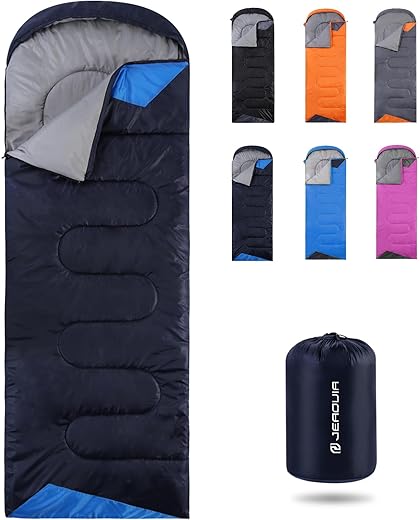
In this step-by-step guide, we empathetically walk you through the process of testing a sleeping bag’s temperature rating, helping you make an informed choice for your outdoor escapades. We know how vital it is to stay warm and comfortable while exploring nature, and understanding your sleeping bag’s temperature rating is key to achieving that. By following our clear instructions, you’ll gain confidence in your gear selection, ensuring that every camping experience is enjoyable and restful, even in chilly conditions.



Gather Necessary Materials
Gather your sleeping bag and make sure it’s clean and ready for action. This is the star of the show, so give it a good fluff and shake to ensure it’s not been flattened like your hopes of getting a good night’s sleep on a camping trip. Next, grab a thermometer. Choose one that can measure the temperature accurately; digital thermometers are great, but if you have an old-school mercury thermometer lying around, this is not your moment to bring it back to life—those things are like the diva of the science world and always have a meltdown. You’ll also need a comfortable testing environment, preferably a cozy indoor space where you can control the temperature and avoid unexpected wildlife visitors. Keep it quiet and peaceful—think zen-like vibes, not a rave party.
Lay everything out and prepare for testing. Find a nice spot in your chosen environment, ideally somewhere with a temperature that you can manipulate; setting the room temperature to around 50°F (10°C) is usually a good benchmark for assessing sleeping bag temperature ratings. Place the thermometer in the location where you’ll be testing, then arrange the sleeping bag, ensuring it’s completely spread out and free from any obstructions. If you’re feeling a bit chilly, throw a soft blanket on top of yourself before crawling into the bag; this will provide an extra layer of insulation and help you gauge how snug it’ll feel on a chilly night under the stars (or just in your living room). Keep your senses alert and take mental notes; after all, your next adventure might depend on how well this baby holds onto that heat!
Choose a Suitable Testing Environment
Select a controlled environment for testing—an indoor space where temperature can be regulated easily. This helps you avoid the mood swings of Mother Nature, which can be more dramatic than a soap opera. Ensure the area is free from drafts and extreme temperature fluctuations; otherwise, your results might get as confused as a cat in a room full of laser pointers. Choose a room that offers consistent temperatures and minimal external disturbances. Here’s what you need to consider:
- Look for a space that has climate control, like air conditioning or heating systems.
- Verify that windows and doors close tightly to lock out any sneaky drafts.
- Inspect the area for proximity to vents or radiators that could alter the temperature unexpectedly.
- Avoid basements or attics unless you can regulate the temperature because they can turn into mini-saunas or ice caves!
Prepare the testing area for optimal conditions. Remove any items that could obstruct airflow, maximized by a good spring cleaning—yes, it’s a chance to declutter! Place your testing materials on a stable surface away from windows or exterior doors. Check the thermometer (the one that doesn’t lie like your friend who said they’d go to the gym). Ensure it reads a constant temperature suitable for your test (ideally between 20°C-25°C). If necessary, use a space heater or fan to achieve that perfect climate like you’re prepping for the next summer blockbuster!
Set Up the Sleeping Bag
Lay the sleeping bag flat in your chosen testing area, ideally somewhere that resembles a cozy camping vibe – think less “concrete jungle” and more “magical forest glade.” Spread it out so it’s fully unfurled like a pancake on a Sunday morning, ensuring there are no wrinkles, tears, or mysterious lumps that could interfere with your snuggling experience. Look for a smooth surface that’s free from rocks or furry critters because let’s be honest, the last thing you need is a squirrel joining your sleep party.
Ensure it is unzipped, allowing for maximum airflow and temperature distribution. Give those zippers a thorough workout, sliding them all the way down while thinking about your best sleep position – starfish or curled up like a human pretzel? This setup not only allows for better heat management when you’re nestled inside but also gives you an excuse to yell, “Look, I’m practically a burrito!” when someone walks by. Adjust the sleeping bag as needed, making sure it’s comfy and welcoming, like a warm hug from your favorite blanket, ready to cradle you in the loving arms of the great outdoors.
Conduct the Temperature Test
Climb into the sleeping bag and zip it up tight, just like you’d do on a chilly night beneath the stars. Make sure you’re in a comfortable position, especially if you’re a side sleeper who prefers to curl up like a shrimp. Set a timer for 30 minutes to 1 hour, and prepare for a cozy mini-adventure! Be aware of how your body reacts as the minutes tick by.
Monitor your temperature by taking mental notes of your comfort level. Wiggle your toes and check if they feel like popsicles or if they’re nestled in a warm cocoon of happiness. If you start sweating like a snowman in July, consider that a sign to unzip a bit or relocate some ventilation—this isn’t a sauna contest! Jot down any changes in comfort and how well you regulate that body heat in your trusty sleeping bag.
Evaluate Your Comfort Level
Evaluate how warm and comfortable you were in your sleeping bag during the testing period. Monitor the temperature of the room where you tested the bag. Pay attention to the following points:
- Record the exact temperature in degrees Fahrenheit or Celsius.
- Be mindful of your clothing; wearing thicker layers may affect your perception of warmth.
- Take note if you used a sleeping pad as it can add insulation and change your comfort level.
Reflect on any additional factors that could have influenced your experience. Think about the insulation level of your sleeping bag—does it match the conditions? Consider these elements:
- Assess whether you felt cold spots anywhere in the bag.
- Determine if you needed to adjust your position or if you felt restricted.
- Keep track of how quickly you warmed up when you first got in and how well you stayed warm throughout the night.
Key Takeaways and Tips
In conclusion, testing a sleeping bag’s temperature rating doesn’t have to be a cold, hard science—or a chilly night under the stars! By following these straightforward steps, you’ve got the upper hand in finding a bag that won’t leave you shivering like a popsicle in January. Remember to document your findings so you can strut confidently into your next outdoor escapade, equipped with knowledge and a cozy sleeping bag. Now, go forth and conquer those campgrounds without the fear of frostbite! Happy snoozing! 💤✨
Essential Gear Checklist

Testing Temperature Accuracy
Maximizing Comfort and Warmth: Essential Tips for Using Your Sleeping Bag
- Sure thing! Here’s a beginner’s guide to using sleeping bags—because who doesn’t want to look like a cozy burrito while camping?
- Choose Your Bag Wisely: Make sure to pick a sleeping bag suitable for the season. Don’t show up to winter camping with a summer bag unless you want to audition for a polar bear documentary!
- Unzip It Like a Pro: When it’s time for bed, unzip your bag and lay it out properly. It’s like performing a very calm and slow magic trick, revealing your comfy sanctuary
- Get Inside (But Not Like a Taco): Slide into your sleeping bag like you’re getting into a warm hug. Just remember, you’re not trying to fit into a taco—so don’t squish yourself in awkwardly!
- Snug but not Stuck: Adjust the drawstrings or any fancy features. You want to feel cozy, not like a sardine in a can. Aim for a snug fit where you can still stick out a foot if you need to cool off!
- Morning Stretch: When it’s time to wake up, unzip, stretch, and roll out like a sleepy sloth. Remember, getting out of bed is half the battle. Just don’t trip over your bag—unless you want to start your day with a laugh (and maybe some bruises)
- Happy camping! 🏕️🌙



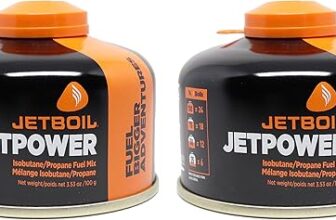
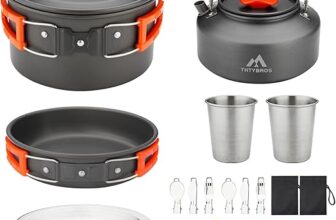
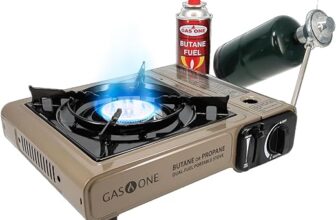
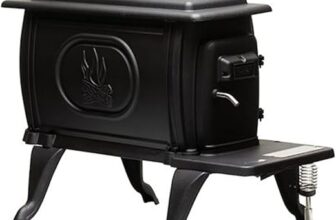


Hey, great guide! I was wondering if you have any advanced tips for testing the sleeping bag’s temperature rating? Like, do you have any specific gear or methods that help get more accurate results?
So I adapted the steps a bit by testing my sleeping bag in my backyard instead of a controlled environment. I wanted a real-world scenario, and it worked out great! Just make sure to check the weather first, though! Anyone else do this?
That’s a fantastic idea! Testing in a real-world environment can give you a better sense of how your gear performs. Just be cautious of unexpected weather changes. Thanks for sharing your unique approach!
What about testing different sleeping pads in conjunction with the sleeping bag? I feel like the insulation from the ground also plays a big role in how warm you feel at night. Could that be a worthwhile topic to cover?
Absolutely! Ground insulation is crucial for warmth. Testing different sleeping pads alongside your sleeping bag is a great idea, and we might just cover that in a future guide. Thanks for the suggestion!
I’ve got to say, I’ve tried testing my Big Agnes Lost Ranger sleeping bag, and I found it to be a bit misleading on the temp rating. I ended up freezing on a chilly night. So, I always pack extra layers just in case! Has anyone else had similar experiences?
That’s a great point! Temperature ratings can be subjective and vary based on individual comfort. Packing extra layers is always a smart move. Thanks for sharing your experience!
Thanks for the kind words! For advanced tips, consider using a thermometer that can be placed inside the sleeping bag for more precise readings. Also, try wearing layers similar to what you would wear in actual conditions to see how it affects your comfort level. Happy testing!
Quick question about the testing environment: does humidity affect the sleeping bag’s performance? I live in a pretty humid area, and I’m curious if that impacts how warm I feel inside the bag.
Great question! Yes, humidity can affect insulation properties. In high humidity, the sleeping bag may feel less warm because moisture can reduce insulation efficiency. It’s always best to test in conditions that mimic what you’ll actually encounter while camping!